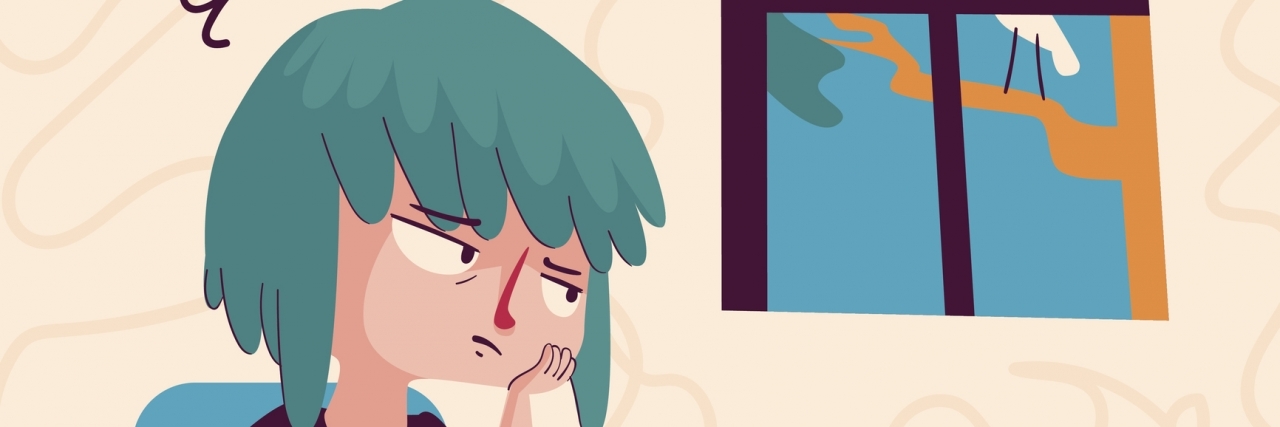“Write clear and hard about what hurts.” Ernest Hemingway’s words are framed in both my home and office, and I follow his advice every day. But what do you do when you’re a depressed writer who can’t find her voice?
My darkest bout with college depression happened the summer of my senior year. I was a journalism major, and I’d kept a journal since I was old enough to write. But for the time being, I’d lost my words.
When words are your comfort, passion and lifeblood, their refusal to play feels like an abandonment. As a writer, you feel invisible. Powerless. Voiceless. Unnecessary.
We were turning in two or three papers a week, so my writing for school was by no means rusty. But I was in such a dark place, I felt completely detached from my emotions. My therapist suggested I start a mood journal, but I couldn’t begin to process the darkness to an outsider, much less myself.
In my search for more light, I spent most of my time in a dark bedroom, watching Oprah. I needed her to tell me how to live my best life! Now! One day she featured Amy Eldon, sister of journalist Dan Eldon who was killed in Somalia. She was plugging “The Journey Is the Destination,” a book of Dan’s journals.
The work chronicled his life from ages 14 to 22, and it was stunning. I was struck by how the pages that conveyed the most story, the most emotion, the most fearlessness and beauty, often included only a picture and a sentence. Sometimes no words at all.
Inspiration had returned.
I’d been so focused trying to earn a degree so I could live a creative life that I’d forgotten how to actually live a creative life.
That evening I bought a new journal, some glue sticks and a $.99 set of watercolor paints, and I spread them out on the kitchen table, along with scissors and a stack of magazines. Instead of trying to find my own words, I let other voices tell my story. I clipped pictures, adding sweeps of watercolor, song lyrics, movie quotes and Bible verses. It was a Pinterest “depression” board, ahead of its time.
So many of my deepest fears were too hard to put into words, and at the time I honestly couldn’t have articulated what they were. But I knew them when I saw them. I’d flip through a magazine and see a picture of a young married couple with a child, and I’d feel an ache. I’d paste the image in my journal and simply write “what if this never happens?” It felt like the safest way to share.
I started scheduling time to work on my journal, putting energy into finding just the right quote or lyric that fit my mood, assessing what color resonated most that day.
My journal accompanied me to therapy sessions, and we could literally see the energy shift. The color palates transitioned from stormy jewel tones to vibrant sunrises. The quotes and lyrics grew more optimistic. I didn’t have to reread page after page to track my progress, cringing at my angst and melodrama, or weeping at the very real inner turmoil.
Instead I could quickly glance and see how far I’d come.
For the first time in months, I felt in control.
I felt heard. I felt present.
Over time, my voice came back. I started writing for myself again. But every now and then, I’d find that I needed to go back to the basics. I needed to color and draw. I needed to create something tangible out of my darkness, and I needed to do it on something other than a computer screen.
I needed to hold my creation. I needed to visualize my struggle on paper, and feel the triumph of, “see! This is real! This is no longer just in my head. You might not understand the words I’m trying to say, but surely you can sense the tone!”
Depression doesn’t help my creativity, but creativity can help my depression.
My depression didn’t deepen my creativity. I fully agree with Elizabeth Gilbert’s stance that it’s next to impossible to truly create when we’re depressed. Rather, my creativity helped me identify my depression, and it helped me connect and engage instead of escaping. For a few months, my creativity’s sole purpose was to remind me that life was beautiful – the light, the dark, all of it – and to help lift me to a healthier place. Only then could I truly return to creating.
For anyone who has “lost their voice,” I suggest keeping a notepad and markers/crayons/paints/pencils nearby. Take a page from childhood and just color, draw or paint your mood. Or flip through magazines and find the images that match how you’re feeling, when you’re at your darkest point. Or when you feel like you’re turning a corner.
When you’re celebrating. And when you’re resilient. Track your journey and see how far you’ve come. See that, for as exhausting and scary as this process can be, there can also be beauty in the struggle.
If you or someone you know needs help, see our suicide prevention resources.
If you need support right now, call the Suicide Prevention Lifeline at 1-800-273-8255.

